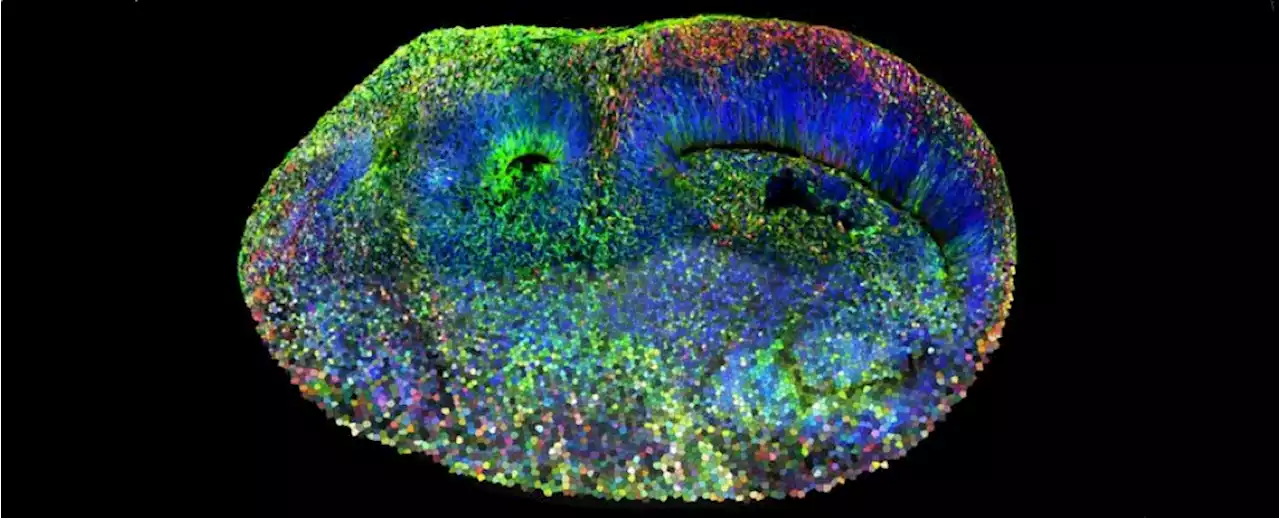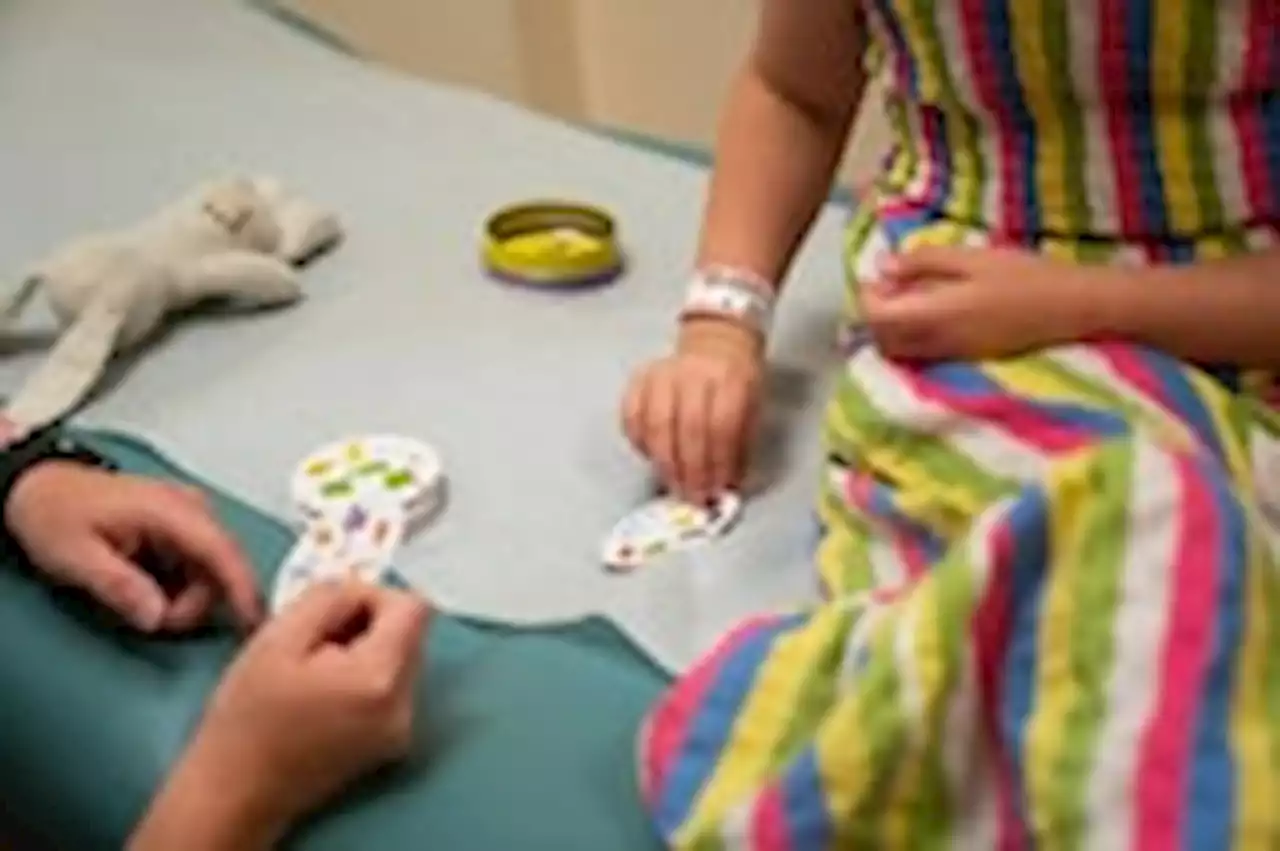Callie Weatherford is the second child in the world to receive an innovative treatment for DIPG, a brain cancer that is almost uniformly fatal.
First, the little girl gets to choose the smell of the anesthetic that will put her to sleep: cotton candy. Then doctors place a helmet over her head so that hundreds of tiny metallic devices inside it can fire sound waves through her skull into the tumor in her brain. The goal: to open the brain’s protective barrier, clearing a path for a chemotherapy drug nicknamed the Red Devil.
“There are a lot of unknowns” to be confronted in the clinical trials, according to Hasan Syed, Callie’s neurosurgeon and co-director of the focused ultrasound program at Children’s National. Although focused ultrasound has proved safe in adults with brain tumorsCallie knows only this: Inside her brain lurks something that isn’t supposed to be there.
DIPG becomes entangled in the brain stem, making it inoperable most of the time. Drugs have difficulty even reaching the tumor. Blocking the way are tightly packed cells inside the brain’s blood vessels that keep out toxins. Doctors call this thesymptoms briefly, in virtually all cases the tumor starts to grow again within six to 12 months.
Insurance has covered all of Callie’s medical expenses. Even so, the Weatherfords spend about $500 for gas, meals and hotels each time they make the trip from South Carolina to D.C. — a not inconsiderable sum for Stephanie, a reading teacher, and Joey, a steelworker.On New Year’s weekend, while at home in Florence, Stephanie noticed that her daughter’s right eye kept drifting inward, as if she was trying to look at her nose. An eye doctor ordered a CT scan “to rule out the scary stuff.
Just two weeks into the treatments, they began working with Lauren Kirages. A “nurse navigator” based in Indianapolis, Kirages helps families of children with DIPG find clinical trials. Many families, she said, have been given little hope, advised by their doctors “to go home and make memories.” She was not anxious. She told her parents, “I like it when they put me to sleep because I get to sleep really long. I can taste the medicine and everything gets blurry.”Best known for its swirling black-and-white images of the developing fetus, ultrasound technology has become a booming area of medicine.
While focused ultrasound has been used to treat cancers in the prostate, breast and other organs, none of those are encased in bone, said Nir Lipsman, a neurosurgeon at Toronto’s Sunnybrook Hospital, which is collaborating on a DIPG clinical trial with another medical center in Toronto.Moreover, Callie’s trial marks the first time focused ultrasound has been used on the brain stem, which is responsible for crucial functions such as breathing, heart rate and balance, Lipsman said.
One day, as Stephanie watched Callie singing and dancing at one end of a pontoon boat, she could not stop herself from wondering:anesthetized, hospital staffers place a metal frame over her to keep her head in place, then a rubber membrane containing water through which the sound waves will travel on their way into her brain.
One final step must be taken before doctors can trigger the sound waves and attempt to open the blood-brain barrier. Fonseca prepares a vial containing tiny microbubbles, each less than one-hundredth of a millimeter in diameter, thinner than a human hair.starts the flow of microbubbles through an intravenous line in Callie’s arm, and they circulate through her body.
United States Latest News, United States Headlines
Similar News:You can also read news stories similar to this one that we have collected from other news sources.
 Posttraumatic brain activity predicts resilience to PTSDAfter a traumatic experience, most people recover without incident, but some people -- between 2% and 10% -- develop posttraumatic stress disorder (PTSD), a mental health condition that can cause debilitating symptoms of anxiety due to emotional dysregulation. PTSD symptoms are present in up to 40% of trauma survivors in the acute aftermath of trauma, but full-blown PTSD develops in only a small subset of cases. Early identification of those at risk is critical for both early treatment and possible prevention.
Posttraumatic brain activity predicts resilience to PTSDAfter a traumatic experience, most people recover without incident, but some people -- between 2% and 10% -- develop posttraumatic stress disorder (PTSD), a mental health condition that can cause debilitating symptoms of anxiety due to emotional dysregulation. PTSD symptoms are present in up to 40% of trauma survivors in the acute aftermath of trauma, but full-blown PTSD develops in only a small subset of cases. Early identification of those at risk is critical for both early treatment and possible prevention.
Read more »
 Artificial Brain Reveals The Genetic Origins of Autism Spectrum DisorderA new scientific technique using brain organoids – mini artificial brains grown in the lab – is revealing the genetic origins of autism spectrum disorder (ASD) hidden within our brains.
Artificial Brain Reveals The Genetic Origins of Autism Spectrum DisorderA new scientific technique using brain organoids – mini artificial brains grown in the lab – is revealing the genetic origins of autism spectrum disorder (ASD) hidden within our brains.
Read more »
 The Resonance of Intelligence: Complex Vocal Learning Predicts Problem-Solving Abilities and Brain Size in SongbirdsA study uncovers a strong link between vocal learning complexity and cognitive abilities in songbirds, with birds exhibiting more intricate vocal mimicry also showcasing superior problem-solving skills and having proportionally larger brains. The relationship between vocal learning complexity and
The Resonance of Intelligence: Complex Vocal Learning Predicts Problem-Solving Abilities and Brain Size in SongbirdsA study uncovers a strong link between vocal learning complexity and cognitive abilities in songbirds, with birds exhibiting more intricate vocal mimicry also showcasing superior problem-solving skills and having proportionally larger brains. The relationship between vocal learning complexity and
Read more »
 Everything You Need to Know to Treat—and Prevent—High CholesterolEighty-six million American adults live with this “silent” condition.
Everything You Need to Know to Treat—and Prevent—High CholesterolEighty-six million American adults live with this “silent” condition.
Read more »
